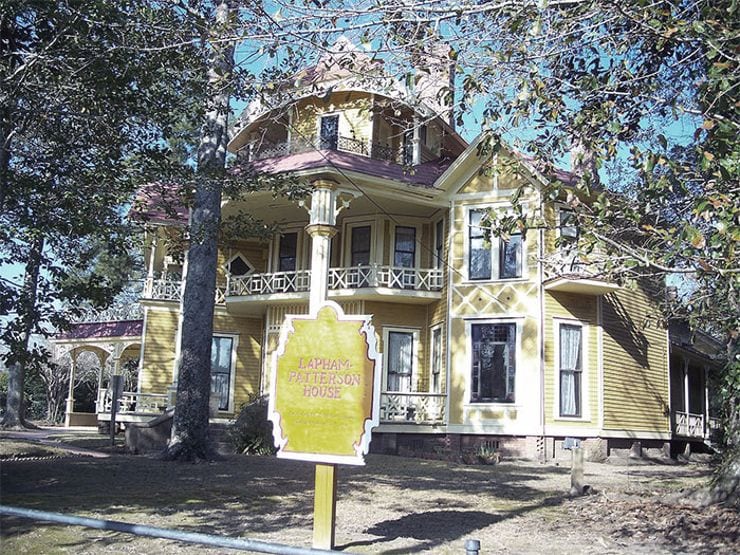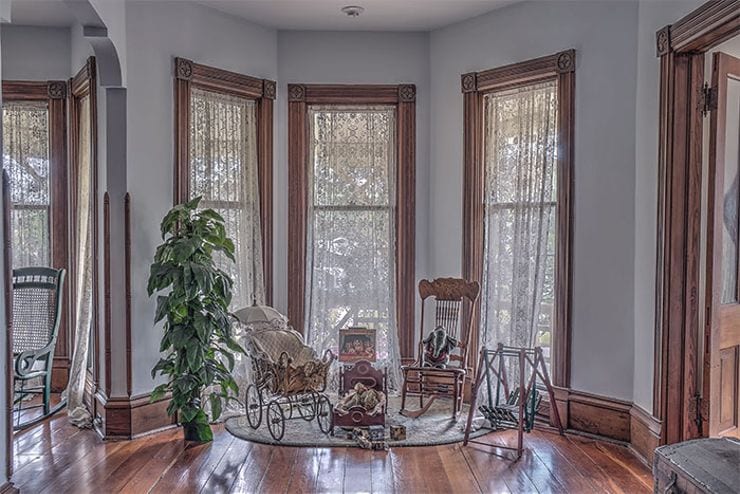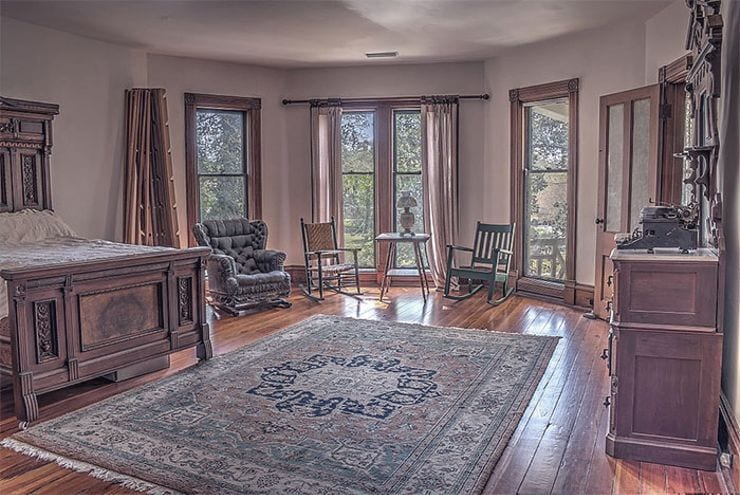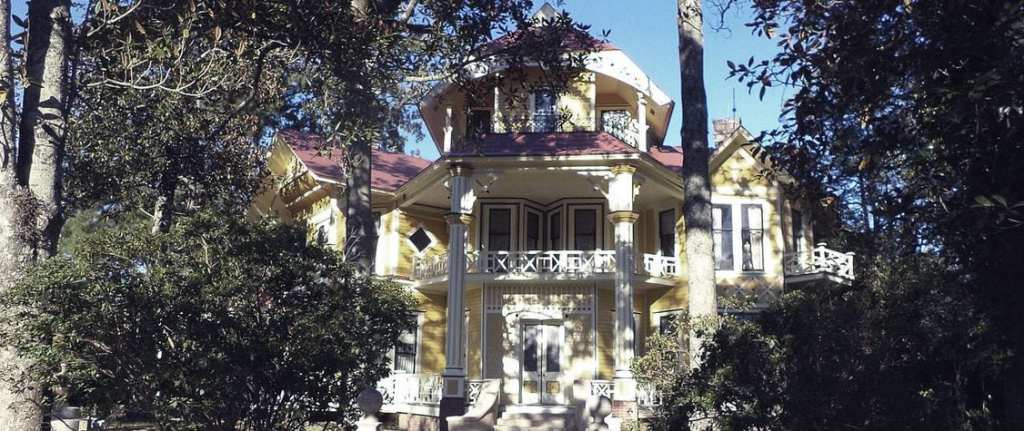Trending Now
Having barely escaped the Great Chicago Fire of 1871 when he was 19, shoe merchant Charles Lapham built his unusual winter home in Thomasville, Georgia complete with at least 50 exits.
Construction began on this ornate Queen Anne-style mansion at 626 North Dawson Street in 1884 and was completed in 1885. The unique architectural touches include fish-scale shingles, a double-flue chimney, a walk through stairway, a cantilevered balcony, and a unique hexagonal shaped dining room. Lapham equipped the home with modern amenities such as a gas lighting system, hot and cold running water, indoor plumbing and closets.

Photo Credit: Wikimedia Commons
Another unusual architectural flourish? The home possesses an overabundance of exits—the result, it seems, of Lapham’s deep fear of fire and being trapped inside a burning building. There are at least 50 exits to the mansion, including 24 exterior doors for its 19 rooms. Many of the mansion’s fifty-three windows are low to the floor and extend to the ceiling, providing additional ways out.
In addition, the Lapham-Patterson house is noticeably asymmetrical. It contains just two true rectangular rooms and clean right angles rarely occur in its many windows, doors, and closets. For naturalists of the Victorian era, this skewed approach was healthy; the lack of right angles imbued the home with spiritual balance and harmony.

Photo Credit: Wikimedia Commons
Still suffering from post-traumatic stress and a fear of fire, Lapham made sure that his new winter retreat included plenty of ways to escape. But his superstition about the Great Chicago Fire didn’t stop there. A decorative bargeboard hangs from the roof of the mansion, embellished with cutout designs. In the center is the shape a horned animal head. On the spring and autumn equinoxes of each year, sunlight shines through this opening and into a third-floor window, casting a bovine-shaped silhouette upon a small stage in the third-floor billiards room.
Historians claim the cow is an homage to Mrs. O’Leary’s cow, the infamous animal that allegedly kicked over a lantern and started the Great Chicago Fire. Perhaps Lapham intended the symbol of the cow as a way to communicate that he was prepared for any bad luck that might befall his second home.
Though Lapham and wife Emma were Quakers, the pair harbored interests in séances and the occult. Of the three photographs that survive of Lapham, one is a spirit photograph with Lapham in the foreground, surrounded by the “spirits” of those who had passed away. Spirit photography was a common practice at the time; mediums used dark room manipulation to add additional images to an original photo. Lapham seems to have believed that being in tune with the spiritual world would protect him from further harm.
Sadly, Lapham’s misfortune continued. He and Emma had five children while they lived at the Lapham-Patterson House, but his daughter Lydia, whom they called Dollie, died, and two others were institutionalized for intellectual disabilities. Eventually, Lapham’s business faltered and his marriage similarly ended up on the rocks. Though they never officially divorced, Emma moved to Arizona with her living sons where she died in 1917 … in an accidental fire.

Photo Credit: Wikimedia Commons
Lapham sold the house in 1894 to a James Larmon—but shortly thereafter Larmon died of a heart attack on a business trip. His wife Harriet sold the house to the Patterson family. The new owners lived at the unusual abode until 1970. In 1975, the house became a National Historic Landmark and was opened to the public as a museum. Since then, staff and restoration workers have reported strange, unexplained activity. Some believe that the house is haunted by little Dollie, Lapham’s daughter who died after an illness in 1886.
This story was first published on The Lineup
Lapham died in 1919 in San Diego. He was cremated, and his ashes were buried alongside his daughter Dollie in the family plot in Chicago. Today, you can visit the eerie Lapham-Patterson House while in Thomasville. From the multitude of doors to the flue system that resembles a firefighter’s hat, it’s impossible not to feel Lapham’s otherworldly compulsions pressing down on you.






